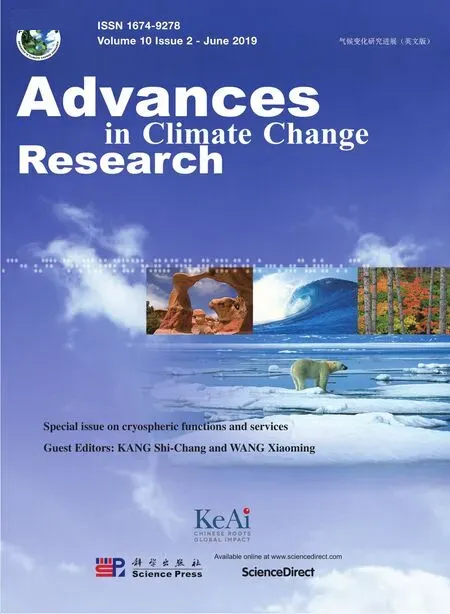Integrated impacts of climate change on glacier tourism
2019-08-13WANGShiJinZHOULanYueb
WANG Shi-Jin*, ZHOU Lan-Yueb
a State Key Laboratory of Cryospheric Sciences, Northwest Institute of Eco-Environment and Resources, Chinese Academy of Sciences, Lanzhou,730000,China
b University of Chinese Academy of Sciences, Beijing, 100000, China
AbstractGlacier tourism is an important type of nature-based tourism with great global potential.However,glacial landscapes and environments are seriously affected by global warming.This study used a scoping review method to explore integrated impacts of climate change on glaciers from the academic literature.All reviewed literature included a wide range of both research and non-research-based data or information.All literature was reviewed by summarizing findings of relevant research. It showed that climate warming has led to rapid melting and retreat of glacier landscapes, which has resulted in a huge impact on economic and social systems. The findings indicated that some glacial landscapes are declining in aesthetics or attractiveness while some landscapes face the prospect of sustained decline or even disappearance.This not only affects glacial cultural appreciation or mountain residents' beliefs, but increases the difficulty in entering and experiencing glaciers. Some points of tourism even face the risk of glacial disaster. Rapid glacial retreat or even disappearance will bring a loss of tourism revenues.At present, it is urgent to anticipate and adapt to these integrated impacts. In short, this study provides a general review of the impacts of climate change on glacial tourism and also some references for the adaptation of future glacial tourism to climate change.
Keywords: Climate change; Glacier tourism; Integrated impacts
1. Background
Ice/Snow,forests,and oceans ar e the three major resources for the future of world tourism.Glacier tourism is based on the modern glacier and glacier relics as major attractions for sightseeing, fitness, scientific research, and popular science and science education.It is a“return to nature,”and cultivator of the temperament of the Alpine outdoors (Wang, 2015).
In recent years, as major world economies and consumer confidence have improved, there has been steady growth in global tourism demand. In the future, cryospheric tourism is expected to develop rapidly. At present, glacier tourism has become an important tourism project in mountainous countries.Due to traffic conditions and tourism market restrictions,early glacier tourism mainly originated in the European Alps,the Pyrenees, the Rocky Mountains, the South Island of New Zealand, and other low latitudes. With the improvement of infrastructure and the increase of leisure time, glacier tourism destinations have extended to the North and South Pole high latitude areas, and have achieved good commercial economic benefits. For example, in 2007, about 700,000 New Zealand tourists traveled to the West Coast Glacier region (Purdie,2013), which directly contributed more than US$80 million to revenues from tourism (TRC, 2007). From May to September,2008,in the state of Alaska,Glacier Bay National Park attracted in excess of 400,000 people (Pirhalla et al.,2014). By 2007, Antarctic tourism had risen to 32,637; in 2017, that number reached 40,383 (including 5286 Chinese tourists). Antarctic tourist increased by 24% over the past 11 years.Each year,Arctic tourism reaches 25-30 million,which far exceeds the indigenous population. In China, there are more than 10 glaciers, mainly located in the eastern Qinghai-Tibetan Plateau(QTP)with its better hydrothermal conditions,closer tourist markets, and better traffic accessibility. Glacier tourists in Yulong Snow Mount and Gongga Snow Mount exceeded 5.56 million in 2017,which is far higher than that of other world glacial destinations.
Climate change will have costs and benefits for glaciercovered areas, but the rapid warming will potentially impact natural and social systems(IPCC,2014).Because of its unique and spectacular landscapes, sights and sensitive climatic and environmental implications, some mountain glaciers have been designated as world heritage sites and world biosphere reserves, to be protected and exploited. Due to the extreme sensitivity of mountain glaciers to climate change, as atmospheric temperatures have risen slightly, glaciers obviously melt and shrink, and some glacier landscapes even face extinction. Since 1950, most of the world's mountain glaciers are decaying and receding because of global warming, and,considering imbalances in current climate, conditions will cause glaciers to shrink even in the absence of future temperature rise (IPCC, 2013). The United Nations Environment Programme, United Nations World Tourism Organization(UNWTO), and World Meteorological Organization, have paid special attention to the integrated impact of global climate change on tourism (Hall et al., 2012; Scott et al.,2016). Some studies have also confirmed that global climate change has had a significant impact on mountain tourism(Wang et al., 2010; Wang and Jiao, 2012).
Global warming indirectly affects the beauty and quality of glacier landscapes, and affects the sustainable development of mountain glacier tourism.In the past,studies have focused on the effects of climate change on mountain natural environments (alpine meadows, forests, forest lines, biodiversity, and environment), and rarely on the impacts of climate change on glacier tourism and adaptation studies. Therefore, measures and strategies in response to climate warming are imperative to the glacier tourism sector.This study includes an evaluation and assessment of climate change impacts on glacier tourism and relevant adaptation.At the same time,this study discusses the potential climate change risks of two glacier destinations in China. Finally, we put forward a macroscopic adaptation strategy for the sustainable development of glacier tourism.
2. Global glacier change
Almost all glaciers around the world are shrinking or retreating; this has been confirmed by time-series analyses of glacier lengths, areas, volumes, and physical balance monitoring changes (IPCC, 2013). Over the years 1960-2010, the area of the world's 16 first-class glaciers (Fig. 1) had a retreat rate of 11.3%. Since 1960, the annual average rate of glacial reduction in the global statistical range has been 0.35%. The regional differences in the extent of glacier retreat are significant,with the annual average rate being the fastest(2.28%)in the low latitudes, and the slowest (0.07%) in the northern Arctic of Canada (RGIC, 2017). The rate of material loss in the Greenland ice sheet has accelerated since 1992, and the average rate is likely to increase from 34 [6-74] Gt per year(equivalent sea level, 0.09 [0.02-0.20] mm per year) during 1992-2001 to 215 [157-274] Gt per year (0.59 [0.43-0.76]mm per year)in 2002-2011.The average material loss rate of the Antarctic ice sheet is likely to increase from 37-97 Gt per year (sea level equivalent, 0.08 [0.10-0.27] mm per year)during 1992-2001 to 147 [72-221] Gt per year (0.40[0.20-0.61]mm per year)in 2002-2011.The total loss of all glacier material in the world is likely to have occurred during 1971-2009 in the range of 226 ± 135 Gt per year (sea level equivalent,0.62±0.37 mm per year),1993-2009 in the range of 275 ± 135 Gt per year (0.76 ± 0.37 mm per year), and during 2005-2009 in the range of 301 ± 135 Gt per year(0.83 ± 0.37 mm per year) (IPCC, 2013).
Since the 1950s, global warming has led to rapid melting and retreat of global glaciers, especially in the middle and lower latitudes. As major world tourist destinations, the Alps,the Rocky Mountain, and the Andes have obviously changed their glacial environment. Over the years 1971-2010, these mountain glaciers have been estimated to have lost 7000 km2of ice (WGMS, 2012). For example, since the 1980s, the Alpine glacier material balance has continued to decline.During 1850-1975, the total number of glaciers in the Alps decreased by nearly half(0.5%per year).During 1975-2000,glaciers were reduced by nearly 25% (1% per year). In the period 2001-2005, glacial loss was up to 10%-15% (2%-3% per year) (Haeberli et al., 2007). By 2100, the Alpine glacier will be reduced to 4%-18%of its 2012 size(Matthias,2012). Over 99% of tropical glaciers in the world are located in the Andes Mountains of South America;71%of them are in Branca,Peru.Over 80 years from 1930 to 2012,the total area of the Blanca glaciers in the Peruvian Andes of South America has decreased by more than 30% (Schauwecker et al., 2014).In Africa, the glacier area of Kilimanjaro National Park retreated from 11.40 km2in 1912 to 1.76 km2in 2011, with about 85% of the ice body having been lost in the past 100 years (Cullen et al., 2013).
3. Integrated impact analysis of climate change
Climate change represents one of the most significant challenges to humanity in the 21st century and is anticipated to have major consequences for climate-sensitive tourism highly dependent on glaciers. Generally, the influence of regional climate on glacier tourism is influenced by meteorological and climatic conditions.Most of the meteorological conditions are concentrated on the daily or multi-day scale, while climatic conditions are focused on a multi-annual or decadal scale. In general, meteorological conditions (such as fog, heavy rain,strong sunlight, and gale winds, etc.) mainly affect the visibility, accessibility, and experience of glacier tourism,affecting entry and activity safety by influencing glacial runoff and moraine stability. Climatic conditions mainly affect the rapid melting of glaciers, so that the quality or attractiveness of the glacial landscape has been damaged;some of the glacier landscape will disappear, affecting correlation dependence within snow, glacier and culture. At the same time, climate change has also contributed to permafrost changes in the glacier regions, as well as ice/snow/rock and frozen lake expansion, thus increasing the difficulty of tourists entering and experiencing glaciers(ice surface,ice caves,icicles,etc.).Some of the potential risks of glacial disasters will constitute a certain threat to the safety of tourists (Fig. 2).

Fig. 1. First-order regions of the Randolph Glacier Inventory (RGIC, 2017).
3.1. The decline of glacier landscape attraction
The glacial landscape is rich and diverse, its shape is a myriad, and the scenes are magnificent. The glacial accumulation landscape is distributed across such zones as the firn basin and the snow eaves. The glacial ablation area is distributed across diverse morphological landscapes such as ice waterfalls, ice river/lakes, glacier karst, glacier shaft,crevasse,seracs,glacier arc arch,ice mushroom(ice table),ice bridge, icicle, ice curtain, and ice cliff. However, climate warming will lead to a high degree of fragmentation of the ice surface,and the most remarkable impact on glacier tourism is the decline in landscape beauty or attraction, as well as the disappearance of some glacier landscape. For example, in the past 20 years,climate warming has caused the ice waterfall of the largest glacier,the Hailuogou glacier of Gongga Mountain on the east edge of the QTP,to appear as a four“skylight.”The ice arc arch, and the end of the “openings” landscape have disappeared. At the same time, the icicle landscape continues to shrink. In the future, Hailuogou Glacier will continue to retreat, and the value of the glacial landscape will be reduced(Cui, 2005).In March 2016,the Argentine Andean Samperito Moreno Glacier (Perito Moreno) Arch “Ice Bridge” has broken down, its landscape having disappeared. The attractions of the whole glacier landscape will disappear and suffer a certain potential economic impacts due to the disappearance.After the 1970s-1980s, because of the lower surface temperature of the north slope of Mt. Everest, when the annual average temperature was 2.7°C, icicles were well-developed,the high difference exceeded 50 m, and the unique icicle landscape formed. However, since the late 1990s, the temperature of the north slope of Everest has risen rapidly,and the melting and collapsing phenomenon of the north slope of Everest has been very significant. This phenomenon was enhanced during the period 2004-2005.By June 2005,on the north slope of Everest, the icicles near the altitude of 5300 m have completely disappeared, causing the aesthetics of the glacier landscape to fall in a straight line(Gao,2015)(Fig.3).It takes hundreds of years to complete the primary succession sequence of continuous vegetation as the original bare ground formed after the glacier retreated (Yang et al., 2015). Glacial retreat destroys the original natural landscape,resulting in the decline of ornamental ice and the natural landscape quality of glaciers, greatly reducing the attraction of the glacial landscape to tourists.
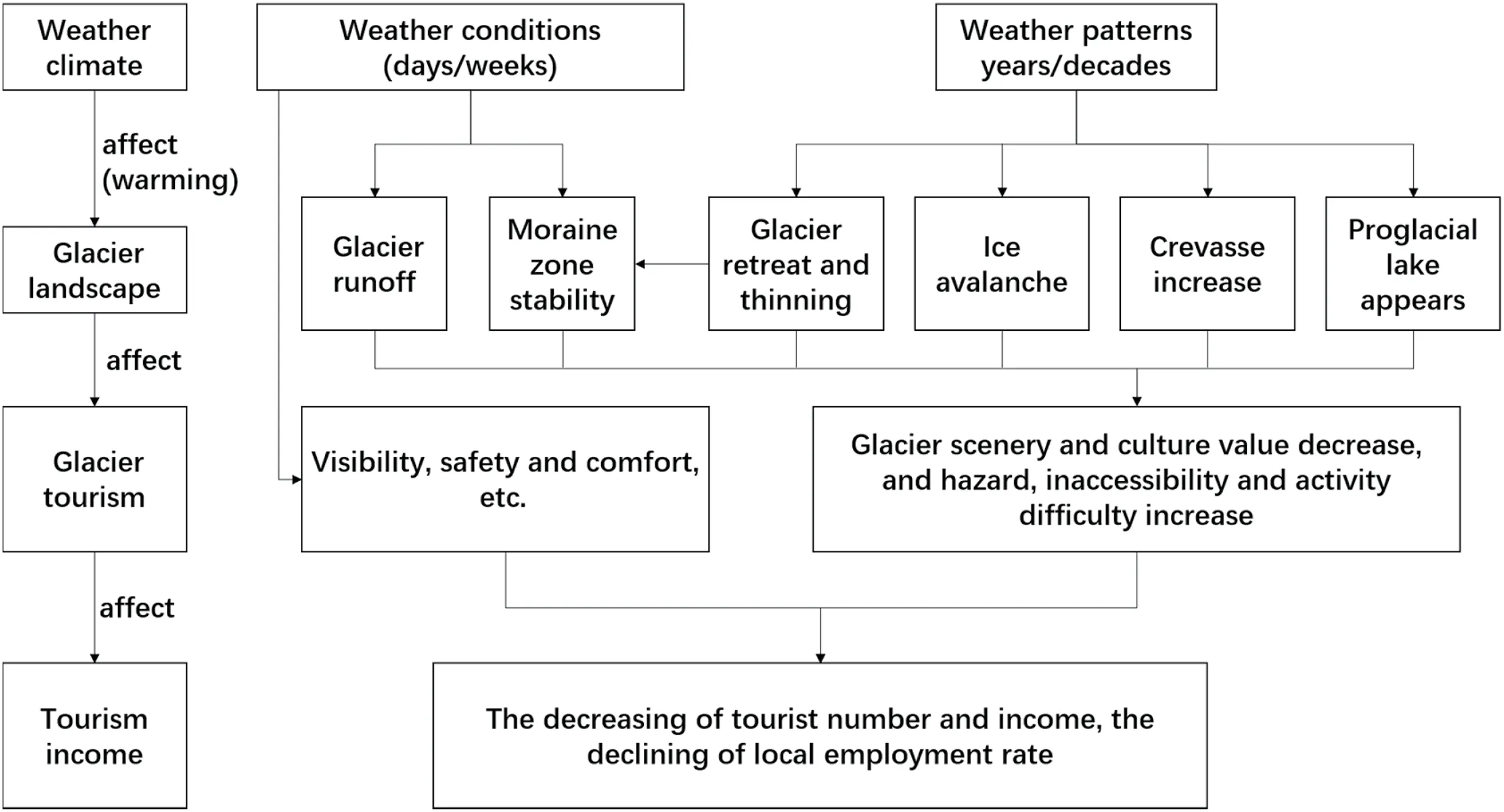
Fig. 2. Impact of climate change on glacier landscapes and glacier tourism activities.
3.2. The reduction and disappearance of glacial landscapes
The most direct effect of climate change on glaciers is the melting and shrinking of glacial landscapes and the disappearance of glaciers.For example,in New Zealand,the length of the South Island Fox Glacier decreased by 700 m during the period 2008-2015. During 1946-2008, the Franz Joseph(Franz Josef) Glaciers, near the Fox Glacier, retreated 2.44 km, with an annual retreat of nearly 39 m (Purdie et al.,2014, 2015). It is predicted that by 2100, the Franz Josef Glacier will be reduced from its current length of 11 km to 6.4 km and the ice will be reduced by 62% (Anderson et al.,2008). A survey indicates that in 1906, the equatorial Rwenzori National Park(a UNESCO World Heritage Site)of Africa had 43 glaciers, covering an area of 7.50 km2.Over a century later,more than half of the glacial ice had disappeared and the glacier was reduced to an area of 1.5 km2(Jackson et al.,2016). It is predicted that the ice cap of the western slope of the African Mt.Kilimanjaro will disappear before 2020,while the rest of the plateau and south slope ice are most likely to disappear by 2040. According to current climatic conditions,after 2060, Mt. Kilimanjaro will be glacier-free (Cullen et al.,2013). As the most dominant tourist resource in Africa, the disappearance of equatorial ice and snow may mean the loss of some snow and ice tourism income (Rowan et al., 2018).
Peru is home to 70% of the world's tropical glaciers, but 40% of their surface area has disappeared since the 1970s.Among them, Pastoruri is one of the most accessible glaciers in the Peruvian Andes. Tourist visits to the region have increased significantly over the past decade. In late 2007, the Pastoruri glacier became the first tourist destination (42,404 visitors) in Peru to be closed due to “adverse climatic conditions.”However,it has lost 22%of its size and 15.5%of its ice mass in the last 30-35 years. During the period 1991-2006,the highest ski resort in Bolivia, the Chacataya glacier area was reduced by 80%. By 2009, the glacier had completely disappeared (Fig. 4), and, as a result, lost its summer ski tour function (Scott et al., 2007; Sanjay, 2011). During the period 1990-2005,the largest glacier,the Forni glacier in the Italian Alps,had retreated 535 m,with an annual retreat of more than 30 m. Until 2012, the Forni Glacier area had decreased 0.51 km2compared to 2007 (Azzoni et al., 2017). By 2010,over the past 56 years, the Alps' largest glacier, the Aletsch Glacier, had retreated 1.40 km, At this rate, by 2050, the Aletsch Glacier will most likely melt to its smallest size ever(Diolaiuti and Smiraglia, 2010). During the period 1882-2010, another famous tourist attraction in the Swiss Alps, the Rhone Glacier, had retreated 1.26 km, the annual retreat rate having reached 10 m (Omoto and Ohmura, 2015)(Fig. 4). The rapid retreat and disappearance of glaciers undoubtedly will have a potential impact on ice and snow tourism.
3.3. The impairment of glacier cultural values
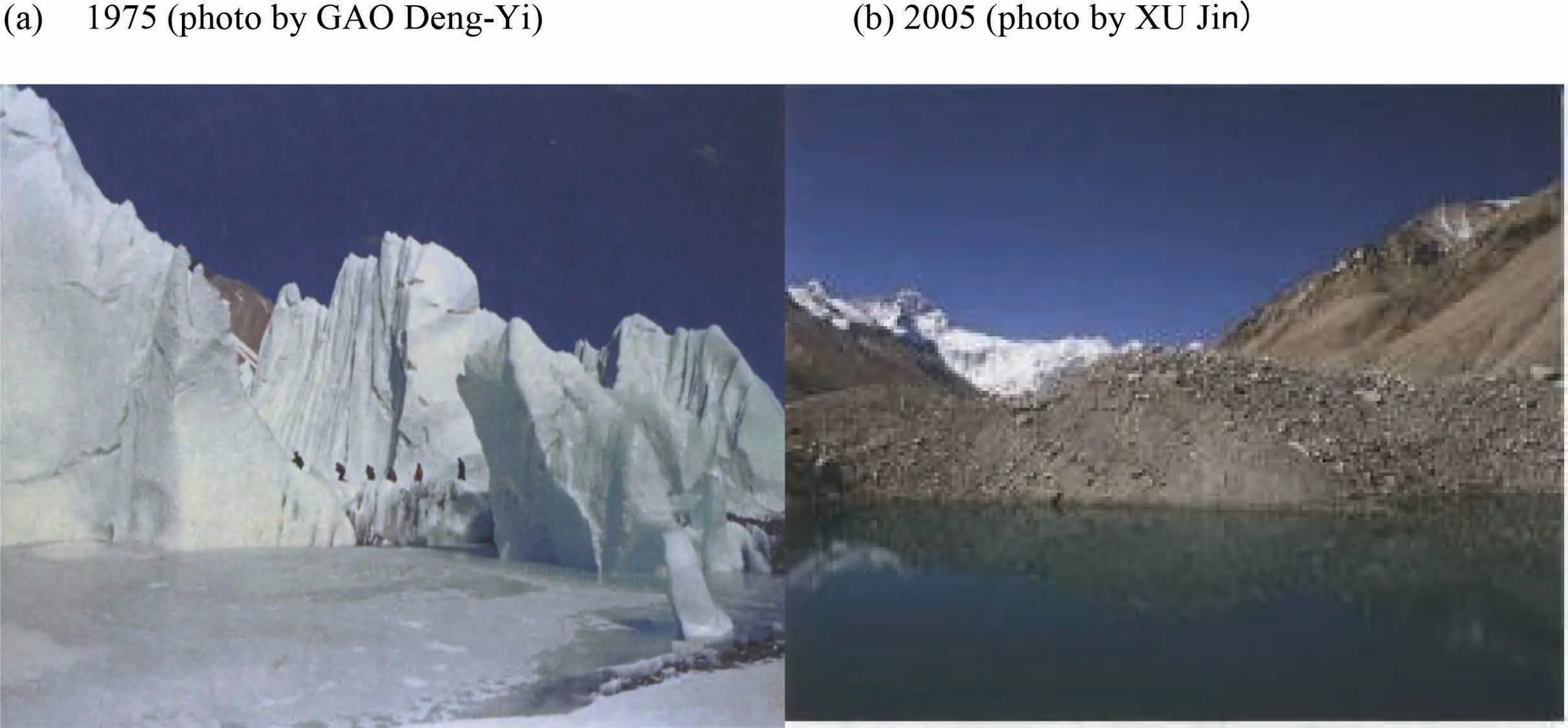
Fig. 3. Landscape changes of the ice pinnacles at 5300 m above the north slope of Mount Everest.
When people pay attention to the economic value of water resources affected by glacier retreat, they often overlook the emotional, cultural, and spiritual values and sustenance that the glacier provides the locals.In fact,they also underestimate the true cost of climate change as it causes glaciers to recede or perish.Mountain glaciers have obvious religious,ritualistic,and cultural characteristics, of which the glacier pilgrimage culture is the most representative. Due to most mountain glaciers being located in the high altitudes between the South and North Pole, the existence of mountain glaciers engenders the unique cultural structure and the special understanding and worship of the indigenous people. The mountain glaciers occupy an important position in the people's hearts(Wang and Cao, 2015). The rapid retreat and extinction of glaciers directly threaten the livelihood and survival of local residents and pose a potential threat to the cultural value of glaciers(Jurt et al., 2015). For example, the Meili Snow Mountain, on the southeastern edge of the QTP, is a sacred mountain; the main peak, Kawakarpo (elevation 6740 m), in addition to bringing the pilgrimage to the Holy Land in Tibetan Buddhism, has a strong and rich religious culture and snow tourism resources.In religion, the Meili Snow Mountain's lofty and sacred position attracts countless Chinese and foreign tourists and climbers. With climate warming, the Mingyong glacier, the largest glacier in the Meili Snow Mountain,retreated at a rate of about 50 m per year(Guo,2007).The cultural and religious importance of this glacier will be seriously impacted. For example, in the Artaud Adyge area of northern Italy, where local residents perceive that glaciers retreat because of excessive amounts of tourists,they believe that visitors should be denied access to the glaciers to avoid a further retreat(Jurt,2007).
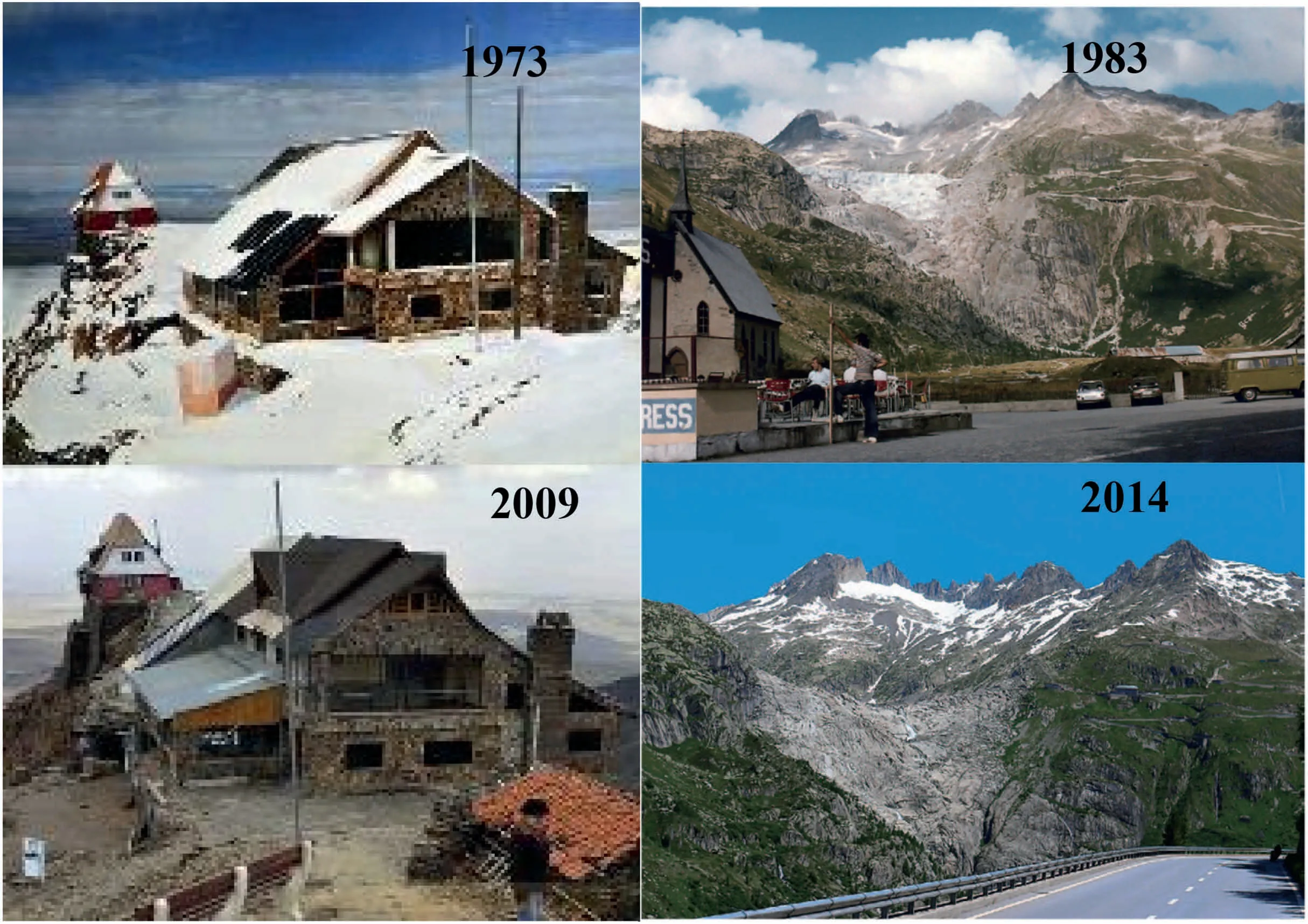
Fig. 4. Glacier landscape changes and disappearance, Chacaltaya Glacier ski resort in 1973 and 2009 winter, photo by Chris-Bolivia; Rhone glacier in 1983 and 2014 summer, by Omoto and Ohmura (2015).
In the Qullqipunqu Mountains of the Peruvian Andes,thousands of pilgrims gather to celebrate the “Snow Star Festival” (Qoyllur Rit’I) near the Qullqipunqu glacier each summer (UNESCO Intangible Cultural Heritage), worshiping their sacred glaciers. The glacier cultural festival is held to attract a large number of tourists every year.However,because of climate warming,the ablation of the Qullqipunqu Mountain glacier is very significant,and now the use of candles has been banned from the pilgrimage. As the continuous retreat and extinction of the glaciers landscapes, the cultural beliefs of native adherents in the spiritual significance of the glaciers will be reduced or even become no dependence. This will not only seriously affect religious beliefs and even glacier cultural values, but also imply the reduction or loss of the source of artistic media, such as film and literature from glaciers(Fig. 5).
3.4. The increasing difficulty in accessing and experiencing glaciers
Since the 20th century, the melting of global glaciers has been accelerating, often forming a large number of crevasses,leading to the formation of lakes. This has directly led to difficulty in accessing and experiencing glaciers, obstruction of tourism projects on glaciers, and changes in ice-climbing routes. These effects also constitute a potential danger to the safety of tourists(Espiner,2001;Jurt et al.,2015).In the Alps,shrinking glaciers, a result of climate warming, are leading to significant reductions in the safety of many traditional mountaineering routes and climbing activities (Ritter et al.,2012). In the glacier tourism area of New Zealand, tourists often face frequent avalanches,ice collapses,extreme weather conditions, floods, and other disasters (Purdie et al., 2015). In Nepal, the summer temperature rise causes rapid melting of the glacier in the Himalayas. The melt-water of the glaciers feeds into nearby tributaries, often causing river flood disasters,which,in turn,complicate tourist access to the glacier and,thus,cut into tourism income(Devkota,2014;Manandhar et al., 2011). In the Franz Joseph Glacier Scenic area of the South Island of New Zealand, the rapid retreat of glaciers has led to the expansion of the moraine, an increase in crevasses and the increased risk of ice collapse and fall at the edge of the glacier. Visitors can often see a warning sign of the danger of ice collapsing and falling stones. In the Rhone Glacier Scenic Area of the Swiss Alps,the ice cave experience was one of its major glacier tourist attractions, but, again, due to the rapid retreat of the glaciers, the old tunnel had to be abandoned(Alean,2010),which made glacier access much more difficult(Fig. 6).
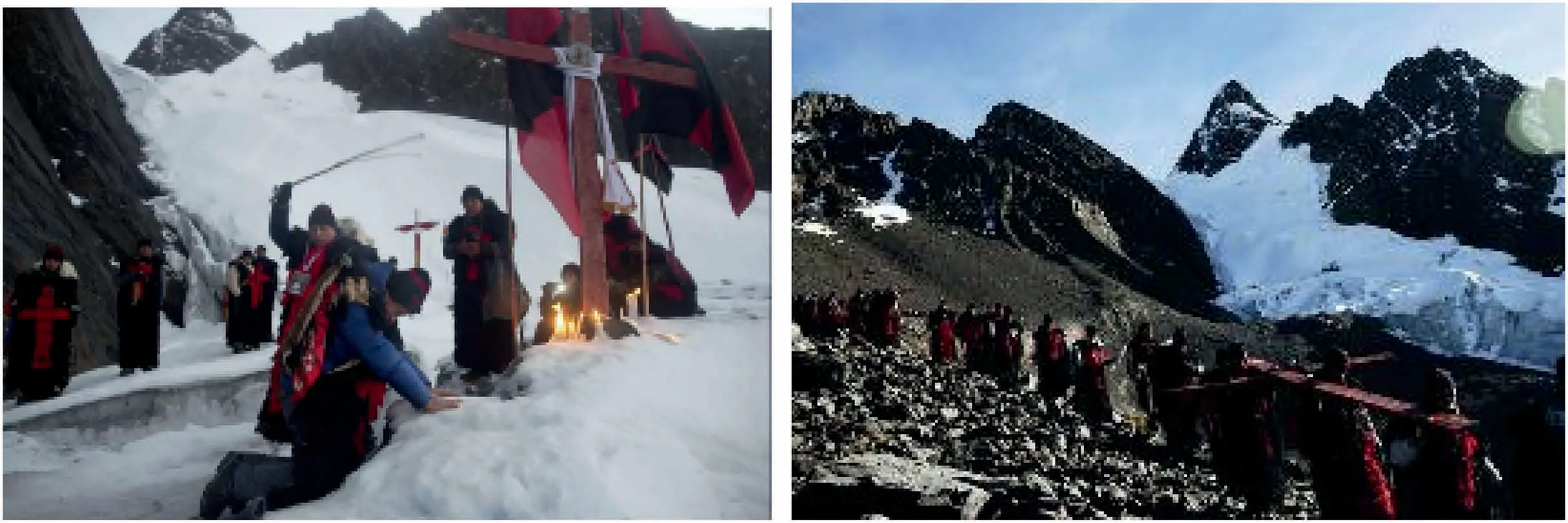
Fig. 5. Pilgrimages in native glacier culture (Qullqipunqu glacier, photo by Omar Lucas on May 24, 2016).
4. Two typical cases
Yulong Snow Mount has developed into the largest and most developed glacier tourist attraction in China and, since 1996,has developed into the largest glacier tourist destination in the world. The number of tourists has risen from 0.21 million in 1998 to 3.84 million in 2016.Tourism direct income exceeded CN¥ 1.8 billion in 2016 and increased 11 times,compared to 19991Provided by the Administrative Committee of the Yulong Snow Mount Provincial Tourism Development Zone.(Fig. 7). The glacier has become an important part of Lijiang tourism. It was calculated that the total recreational value of glacier tourism resources at Yulong Snow Mount ranged from CN¥1.97-8.17 billion (Yuan and Wang, 2018).
Baishui Glacier No.1 (the largest glacier in the Yulong Snow Mount) has been observed in rapid retreat, having retreated 390 m at a rate of 20 m per year.The elevation of the glacial terminus has increased by 195 m, with an average annual increase of 10.27 m from 1982 to 2017(Fig.8).Glacier tourism is inevitably affected by accelerating glacial retreat in the long-term, although, counter-intuitively, there may be increases in the numbers of visitors in some areas if access improves or there is a desire to learn about climate and glacial change before glaciers are lost (Bury et al., 2011; Purdie,2013). Survey results have shown that almost all tourists surveyed have a strong perception of the retreat of glaciers and express great concern.If glacier and snow resources disappear on the Yulong Snow Mount,at least 19.60%, and a maximum of 44.20%, of tourists will be lost, and the loss of tourism revenue will be enormous.2From June to September 2017, Dr. YUAN Ling-Ling and his team conducted a questionnaire survey on the value of glacier and snow tourism services at the Visitor Center of Yulong Snow Mount.For example,about 20,000 people visit glaciers annually in Norway.In the period 2003-2009,a 30%reduction in visitor numbers and operators was observed.In 2003,access to the glacier surface was made more difficult,and guided tours had to be extended to get the same amount of time on ice. When more time was required for this type of adventure, some tourists may have lost interest (Furunes and Mykletun, 2012).
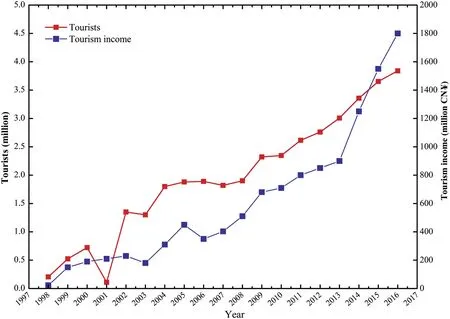
Fig. 7. Trends in tourist visitation and income of Yulong Snow Mountain Glacier Geological Park.
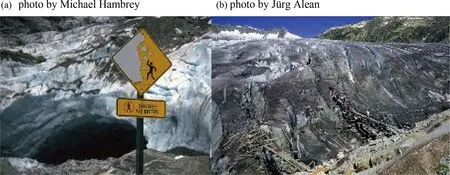
Fig. 6. The accessibility of glaciers or within glacier sites has been reduced (a) on March 27, 2010; (b) in August 2007.
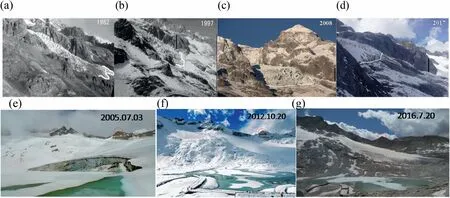
Fig.8.Front slope variations in Baishui Glacier No.1,China in 1982-2017(a-d,the foreground rocks(white line)provide an excellent reference point;photo for 1982 was provided by ZHU Guo-Cai),and Dagu Glacier No.17 change on the Dagu Snow Mount on the eastern edge of the Tibetan Plateau(e-g,the red circle provides a reference to show how fast the glacier retreat; photo from Management Committee of Dagu Snow Mountain Scenic Area, Sichuan province).
Similarly, under this climate background, the glaciers on Dagu Snow Mount(third largest glacier tourism destination in China),on the eastern edge of the QTP,have also continued to retreat and thin in recent years. In 2016, the total number of mountain glaciers was only 13, with a total area of only 1.70 km2,a decrease of 4 glaciers and 25%of the glacier area of 2.27 km2from the second glacial census (2007 data).Among them, the length of Dagu Glacier No.17 (the largest glacier in the Dagu Snow Mount) was reduced by about 0.76 km, the width by 0.40 m, the area by 0.78 km2, and ice reserves by 0.047 km3during the period 1971-2016 (Fig. 7).At the same time, the glacier ablation period was advanced,the glacier surface was damaged seriously, the crevasse was expanded to the glacier accumulation area, and the number of crevasses increased significantly. Also, the glacier river gradually expanded, a sporadic glacial lake appeared, and the glacier became thinner in the melting area. In the future, due to the further intensification of climate warming, the glacier will continue to shrink, which will have direct and indirect impacts on glacier tourism.The direct impact will be the rapid disappearance of the glacial landscape, while indirect influences will include a significant increase in the number of tourists in the short term and a sharp rise in tourism revenue.However, in the long run, the number of tourists and tourism revenue will be greatly decreased.Based on these effects,local tourism managers and government should increase protective measures for glacial resources as soon as possible in order to mitigate the potential impacts and losses caused by climate change.
5. Conclusions and prospects
According to the results of the World Tourism Organization(UNWTO), in 2016, the number of outbound tourists worldwide exceeded 1.235 billion, an increase of 500 million over the previous ten years. As a main tourism attraction, glaciers occupy an important position in the world tourism system,having shown great economic benefits for many mountainous countries, even in the Polar Regions. However, the rapid retreat of glaciers as a result of climate warming has or is about to limit the sustainable development of tourism in mountainous countries. In the 21st century, climate change is undoubtedly the toughest challenge for glacier tourism.Glacial resources are the most important for tourism and the livelihoods of indigenous populations in mountainous countries or regions. These areas are experiencing the severe challenge of shrinking glaciers. Under current climate conditions, glacial melting and its integrated impact on future sustainability is unavoidable, and is the primary consideration in planning for glacier tourism. Tourism stakeholders should not only be aware of the opportunities and problems of glacier tourism,but also of the risks associated with climate change in the future.
The rapid ablation of the glacial landscapes is a direct result of global climate change, making control of global temperature rise imperative. All countries around the world should actively support and implement global environmental and energy policies, encouraging the use of cleaner energy and new technologies, particularly in accordance with the Kyoto Protocol, the Bali Road Map, the Copenhagen Summit on Climate Change, and the Paris Agreement. Energy conservation and emission reduction quotas should be implemented as soon as possible. Of course, local adaptation can hardly solve the sustainable development issues of glacier tourism, and measures should include adaptation of industrial structure,energy structure optimization, low-carbon products development, and promotion of “green” consumption.
This review has revealed that how climate change impact glacier tourism with several specific aspects. Such understanding requires tying together diverse research interests,subjects, and methodologies, such as those found in the reviewed studies, to help develop a more coherent and consistent research field. The chosen methodology for this research appears limited in scope as it explores all facets of glacier tourism and impacts from climate change. However,this study should constitute a baseline, and a first, but necessary step,toward understanding glacier tourism and creating a foundation to guide climate change research as it relates to such tourism. Currently, glacier tourism development is different from early simple tourism development. Its stakeholders need to be aware not only of the opportunities for glacier tourism, but more importantly, of climate change impacts, in order to adopt a perfect tourism planning system,protect glacier attractions, control the number of tourists, and strengthen science education.
Conflicts of interests
The authors declare no conflict of interest.
Acknowledgments
This work was supported by the Major Program of National Natural Science Foundation of China (41690143) and the National Natural Science Foundation of China (41701505).
杂志排行
Advances in Climate Change Research的其它文章
- A new look at roles of the cryosphere in sustainable development
- A preliminary study on the theory and method of comprehensive regionalization of cryospheric services
- Valuating service loss of snow cover in Irtysh River Basin
- Impact of climate change on allowable bearing capacity on the Qinghai-Tibetan Plateau
- An ecosystem services zoning framework for the permafrost regions of China
- Modeling the carbon dynamics of alpine grassland in the Qinghai-Tibetan Plateau under scenarios of 1.5 and 2 °C global warming
